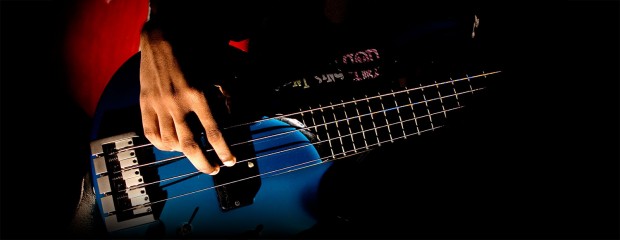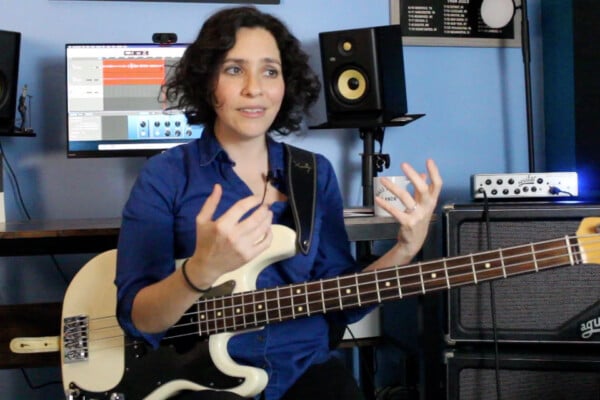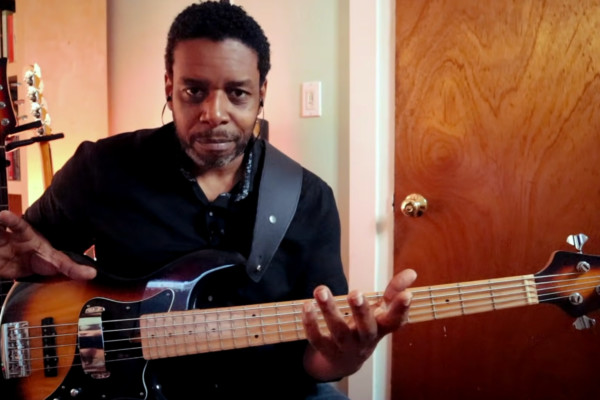Focused Learning: A Bass Player’s Guide to Practice and Rehearsals

Q: I’d like your advice on what a bassist should be thinking during a practice session or when learning new material? What do you think about during those times? What should I be thinking?
A: This question struck me as interesting. Primarily, I think it’s because it relates to a conversation I recently had with a student with regard to listening. The gist of my point with him was this:
Internalizing harmony, rhythm and familiarity with your instrument are crucial steps in a musicians evolution because we simply cannot listen well when we are thinking.
Our conversation was about mastery, and I perceive those three things (harmony, rhythm and familiarity) as the big roadblocks to evolution. But that last point applies here, I think.
When I am practicing with a band or just learning a new tune at home, I tend to keep my parts as simple as possible so that I have more brain power to direct toward my ears. My goal is to think as little as possible.
Now, that’s easier said than done. Especially when trying to learn unfamiliar material.
I may be taking your question a bit too literally, but I’d like to make that point before I continue. I find that many of my students spend very little energy actually listening to the music that they are making when playing a tune. This is primarily due to thinking too hard about chord scales, technique, hand position and time in order to listen to the music they are making. The catch-22 is that they will never play anything that they approve of if they aren’t listening and too focused on the nuts and bolts. This is why it’s so important to make that information second nature. This is done through smart, efficient and tireless practice and repetition.
I think your question is more about focus when rehearsing or practicing. This answer to that question is less abstract but in many ways it is much the same answer.
My goal when rehearsing with a band is to strip away the fat and get to the meat of the tune. I try and figure out exactly what feel works best and then focus on creating a line or approach that is both interesting and musical, while still appropriate. I’m more likely to play too simply at first, if anything. Once I’ve locked in on the feel with the drummer and we have our basic parts sussed out, I may get a bit “notey” while exploring my options but I also try to thin it out once I feel like I have a direction.
Here are a few things to focus on when rehearsing new tunes with a band.
Listen to the drummer!
Lock with his kick and snare. Pay attention to the feel of his groove. Does it swing just a little bit? Is it totally straight? Find that sweet spot where you are matching the drummer’s vibe just as much as you are matching (or countering) his or her actual hits and grooves.
Pay attention to the melody
See if you can accentuate it without stepping all over it. You can treat the melody as if it were someone speaking to you. Be polite and listen and respond if necessary, but never talk over someone.
Make sure that you have the proper chord qualities in your head. Listen to the guitarists or pianists voicings
You don’t want to use a ?6 if there is a natural 6 in the voicing, for example. I don’t mean that you should be able to pluck every note out of a chord and just know what it is, but keep your ears open for any notes that “rub”. If you hear a note that rubs in the wrong way, either ask about the chord-scale or voicing they are employing, or simply try a different note next time. Find something that complements. Make sure to control any tension in your line.
Aside from that, I usually just try my best to hear the song and band as if I was a fly on the wall. Does it feel good as a whole?
When learning songs on my own in my practice room, I typically focus on relationships. When I’m trying to memorize changes, there are two things that I do:
- Drill the tune over and over again. Multiple times a day!
- Pay attention to chordal relationships. How are the changes moving? are they diatonic? Is the root motion following any kind of discernible pattern?
I usually make myself a cheat sheet if there’s no chart available, and then slowly remove information from my chart until I can play the whole thing. Then, I continue to drill it at least once or twice a day to keep it fresh in my memory.
Here is an example of how I might approach learning a tune (with no chart) from a songwriter:
- Simply listen to the tune a few times, or until I can hear it in my mind’s ear.
- Make a list of the chords used in the tune, in order.
- Play along to the song using only the list of chords. This forces me to really have the song internalized a bit so I know when to change chords
- Start removing the chord qualities so I am only left with root motion. This really tests your knowledge of the chord types used.
- Stow the cheat sheet and play the tune a few times in a row with no chart. If you mess something up, stop, fix it, and repeat that section a few times to log it in the memory bank.
- Play through the new tunes once or twice a day to keep it in your mind.
In the end, it is really patience and repetition that will get the job done with regard to memorizing stuff. Once you don’t have to think about it? Then you can get back to listening!
Hope that helps.
Have a question for Damian Erskine? Send it to [email protected]. Check out Damian’s instructional books, Right Hand Drive and The Improviser’s Path.




Great information! Thanks!
Thank so much! I was rehearsing yesterday with my band mates and this is the approach I will follow for the next session…
a great answer, thank you very much
When practicing at home. ..overplay everything and when you perform and play the right part correctly it’ll be effortless.
Practice songs that you hear everyday even if it’s a genre you don’t like. Listen to American Top 40 and play along with every song. How I learned how to play is by listening to the radio. My dad was stationed overseas with the family and when I was growing up there, we only had one american radio station that played a variety format. I didn’t have any musician friends to play with so what I did was play along with the radio. I knew all of those songs by ear anyway because they were on the radio everyday. Top 40 am songs. One minute I was playing r&b, rock, the next I was playing along with country & western and folk/soft rock. Even if the songs are a bit tricky, you give it a shot. Since it’s top 40, that same song will be on the radio again later anyway so you can have another whack at it. Even if it’s not an actual bass guitar playing the part, try to play along with it. Try playing the other instruments’ parts too when you have the bass part down. You’re not just a bass player, you’re a musician too. I knew how to play every Eagles song when they were popular in the 70s just as well as I knew every Motown and Bootsy Collins song. After awhile you start to see the musical patterns in popular songs and when you play along with an unfamiliar song, your trained ears will lead you to the next notes. As a result, you’ll be able to fit into all kinds of different genres from pop, r&b and dance to hard rock and alternative.
This works well for most styles but I find it differs in both rock and metal. In rock I always find it best to keep it to root notes that lock with the kick. Then add the guitar hooks to empower them more. Where as with the more extreme areas of metal I like to play a carbon copy of the guitar riffs then add some interaction with the drums where needed.
Great post! Thanks man.
This is just beautiful, tnx teacher.